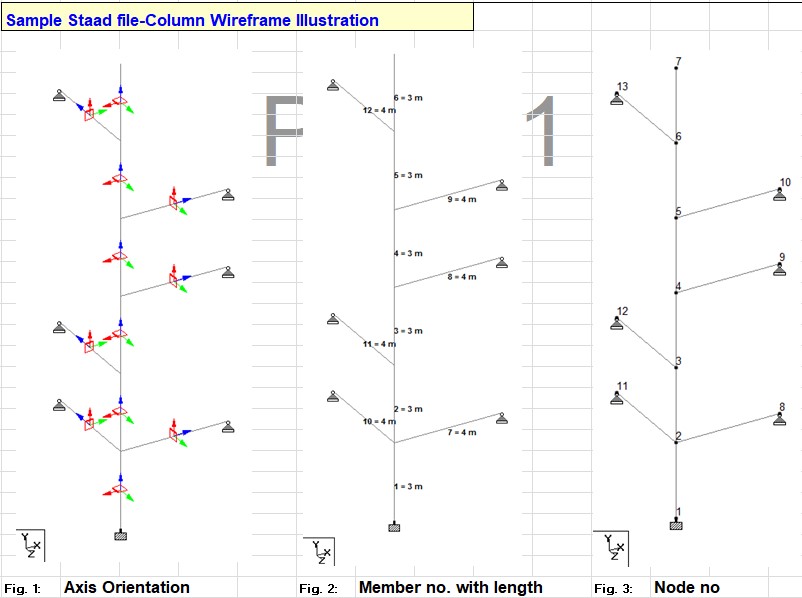In STAAD.Pro, ELY and ELZ are parameters used to define the effective length factors of a column in the major axis (local Y-axis) and minor axis (local Z-axis), respectively. These parameters are essential when designing RCC columns to account for buckling in different directions as per the relevant design code, such as IS 456:2000.
How to Use ELY and ELZ in STAAD.Pro
1. Define ELY and ELZ Parameters
To specify effective length factors for the column in STAAD.Pro, use the following syntax in the input file:
2. Assign Parameters to RCC Columns
- The ELY and ELZ values must be assigned to the RCC column members before running the analysis and design.
- Ensure you specify these parameters for each column or group of columns as per their boundary conditions.
1 One column at a particular grid is identified.
2 Physical length of the column between two specific nodes is noted from STAAD – This is the Staad length
3 Actual unsupported length of the column for bending about the local axes of the column about ‘Y’ & ‘Z’ is noted.
4 Note: Unsupported length of the column for bending about one local axis is the distance between the beams —
between which the column is effectively restrained for bending about that particular axis.
5 Ratio of Unsupported length to physical length is multiplied by the effective length factor is —
the ELY & ELZ parameter considered in Staad
6 This process is repeated for the complete column between two consecutive nodes from foundation to the top of column —
to calculate the effective length of one RCC column
7 This process is repeated for all the columns in a given structure and Effective lengths are calculated thus.




